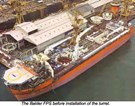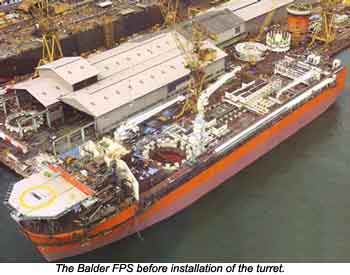Balder Litigation Reflects Norse God Tragedy

by John Howes, London
 The story of the Norse god Balder remains one of the most tragic in the entire mythological canon. Although Frigg, his mother, made him invincible, he never realized his enormous potential. Despite being blessed with wondrous wisdom and skill, and being "so radiant that he gave out light," he was unexpectedly killed. As he did not die in battle, his body was sent on a flaming boat to the goddess Hel the terrible. Even when the Aesir gods tried to get Balder back and prolong his life, the sad and protracted story continued, eventually ending in grief and despair.
The story of the Norse god Balder remains one of the most tragic in the entire mythological canon. Although Frigg, his mother, made him invincible, he never realized his enormous potential. Despite being blessed with wondrous wisdom and skill, and being "so radiant that he gave out light," he was unexpectedly killed. As he did not die in battle, his body was sent on a flaming boat to the goddess Hel the terrible. Even when the Aesir gods tried to get Balder back and prolong his life, the sad and protracted story continued, eventually ending in grief and despair.
In many ways, the story resembles the Esso Norge's Field of the same name. A field of great potential when it was discovered in 1987, persistent troubles with the floating production system prolonged the project timetable, ending in grief and litigation.
The saga of the Balder oil field dates back to 1994, when rig owner and operator Smedvig, cognizant of the predicted expansion of the floating production market, speculatively ordered the SPU 380 design floating production vessel to be built at the Singapore-based Keppel FELS yard. The ship-shaped floating production unit was to be delivered by February 1996. Smedvig's intention was to employ this vessel on small and medium size fields.
When marketing the SPU 380 to prospective operators ,the availability of such a vessel began to interest Esso, which was looking for such a production system for its Balder Field . This field had been discovered over 25 years previously and, after considerable appraisal, was at the time seeking government approval.
The ensuing negotiations between the two companies resulted in Esso purchasing the vessel—by now 75% complete—for US$295 million. Smedvig consequently signed a long-term agreement for operation of the vessel. By June 1996, the vessel, re-named the Balder FPU, was moved from Singapore to the Offshore & Marine yard in Sandnes, Norway for the installation of various equipment and completion packages.
As the fabrication continued, however, Esso began to register dissatisfaction with some of the work, especially that located under the turret. In order to access this area, its engineers reasoned that any examination and construction had to be undertaken "in dry conditions". Esso decided against constructing a coffer dam barrier and draining the water away, in favor of relocating the entire vessel at the UiE yard dry docks at Inchgreen, Glasgow, Scotland. The company estimated a nine-week work program.

As parts of the vessel began to be disassembled in Glasgow, however, Esso, suppliers, subcontractors, and external consultants took the opportunity to conduct new inspections. This resulted in Esso claiming the presence of 34 defects. By October 1997, after further examination, this figure had escalated to 127 alleged defects. Esso immediately cancelled the contracts with Smedvig.
On April 3, 1998, Smedvig responded by submitting its legal case to the Stavanger courts for unlawful termination and willful breach of the contract. In the complaint, Smedvig claimed payment and reimbursement of all outstanding funds and incurred costs under the contracts, totaling NOK 2.6 billion (US$350 million). In September 1998, Esso replied by submitting its defense against Smedvig, insisting that the termination was due to "a litany of major defects". In addition, the company submitted a NOK 4 billion (US$540 million) counter-claim for costs incurred to complete the vessel, as well as consequential damages from the delayed production start-up. The case of Esso Norge vs Smedvig is presently being heard in the City Court of Stavanger. The deliberations are expected to continue for 280 court days, with a decision expected in the first quarter of 2001.
Of the two companies, Smedvig has been by far the most vociferous, particularly in the Norwegian press.
The company claims that "The alleged defects are mainly related to parts of the vessel which were approved and certified by Det norske Veritas and other maritime authorities and which had been inspected by Esso during the construction process. The alleged defects "also included instances and details which Esso had deleted from Smedvig's scope of work."
The SPU 380 that Esso initially contracted from Smedvig in 1995, was designed with a continuous production field life capability of 10 years ( although the hull was designed for 20 years fatigue life). One of Smedvig's principal arguments is centered on the allegation that the additions and rebuilding program instigated by Esso has been designed to accommodate greater throughput capacities than originally specified. This, they contend, was done to allow Esso longer continuous in-field operation life in the light of subsequent requirements. "Redesigning a vessel after completion is both costly and time consuming," said a Smedvig spokesman.
This redesign work included the replacement of piping materials (eg galvanized steel to copper nickel); increased requirements for fatigue life of piping systems; improved protection and ratings of electrical equipment; new coating systems; new cathodic protection systems, change-out and strengthening of cable racks; improved insulation; up-rated pumps; upgraded active and passive fire protection and change-out of valves.
"If Esso in 1995 had known that the Balder production vessel was to be redesigned the way Esso is now doing, we would not have recommended the oil company to acquire a vessel with 10 years specifications that was already 75% complete. Both Esso and Smedvig as well as the Norwegian taxpayers, who will end up paying most of the additional costs, would have been better off with a different solution," said Smedvig CEO Stål Rød.
Another point made by Smedvig is that Esso elected to take the vessel to UiE's drydock in Scotland, a yard essentially mothballed since 1989. This contract was not carried out under a fixed price arrangement and, as the yard had no other work after Balder, there was low productivity. Smedvig also insisted that the actual repairs required to weld defects in the marine piping systems have been shown to be within the normally expected/accepted levels for the industry.
For its part, Esso has consistently said that it would not conduct its arguments in the press, but in the courts. It did re-emphasize however, that when it analyzed the work carried out by Smedvig, Esso did not consider the vessel fit to reasonably carry out the production activities for which it was intended. Esso insists that it had no alternative but to conduct expensive remedial engineering. In such a complex and compact design, it says, it was often necessary to remove perfectly good pipework and equipment in order to access the defective components, which escalated time and costs.
The Balder Field eventually came on stream in September 1999 and since then, production has been ramped to 80,000-90,000 b/d. Esso is looking to other fields in the area to maximize the effective use of the floating production unit. One such is the Ringhorne prospect. It is presently undergoing preliminary engineering, but it is anticipated that it will be developed by a subsea wells and a fixed platform, tied-back to the Balder.
